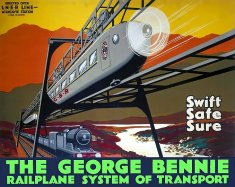
Book review: Bus & Coach Recognition (Veteran & Vintage)
One of the most in-depth books I’ve come across about vintage buses and coaches. A very handy reference guide that is just the right size to fit in your back denim pocket.

One of the most in-depth books I’ve come across about vintage buses and coaches. A very handy reference guide that is just the right size to fit in your back denim pocket.

When older buses are buses withdrawn from public service, they are either sold, scrapped, preserved, or one or two were repurposed as mobile libraries.

Standing at a bus stop in the UK can be a chilly and wet experience, especially in Scotland. It certainly helps if a bus shelter is provided.

I don’t think I’ve ever come across a passenger not saying thank you as they stepped off the bus.

This was an experimental, propeller-driven suspended monorail invented by George Bennie from Glasgow, who claimed it would reach speeds up to 120mph (193 km/h).

When I was a boy in the 1950s, blue was my favourite colour and I loved blue buses, especially this type. I longed to have a ride on one and I hoped that one day it would happen. But it never did. We weren’t allowed to board the blue buses where I lived.

This tough-looking tow truck was on show at the recent Scottish Vintage Bus Museum’s Open Day. It looks like its Gardner 6LX engine could tow anything - but can it?
And what did it look like before?

This lovely former Guernsey Railway coach was recently on display at Glasgow Vintage Vehicle Trust’s Bridgeton Bus Garage in Glasgow.

When I walked into the Transport Museum in Greater Manchester, I came across this handsome bus, all on its own, with permission to board the bus (very rarely does that happen) and enjoy the simple but functional design of this lovely Leyland.

Graham’s of Paisley was a highly regarded independent local bus company in Scotland. It ceased operations in 1990 and is sorely missed. They went that little bit extra for their passengers.